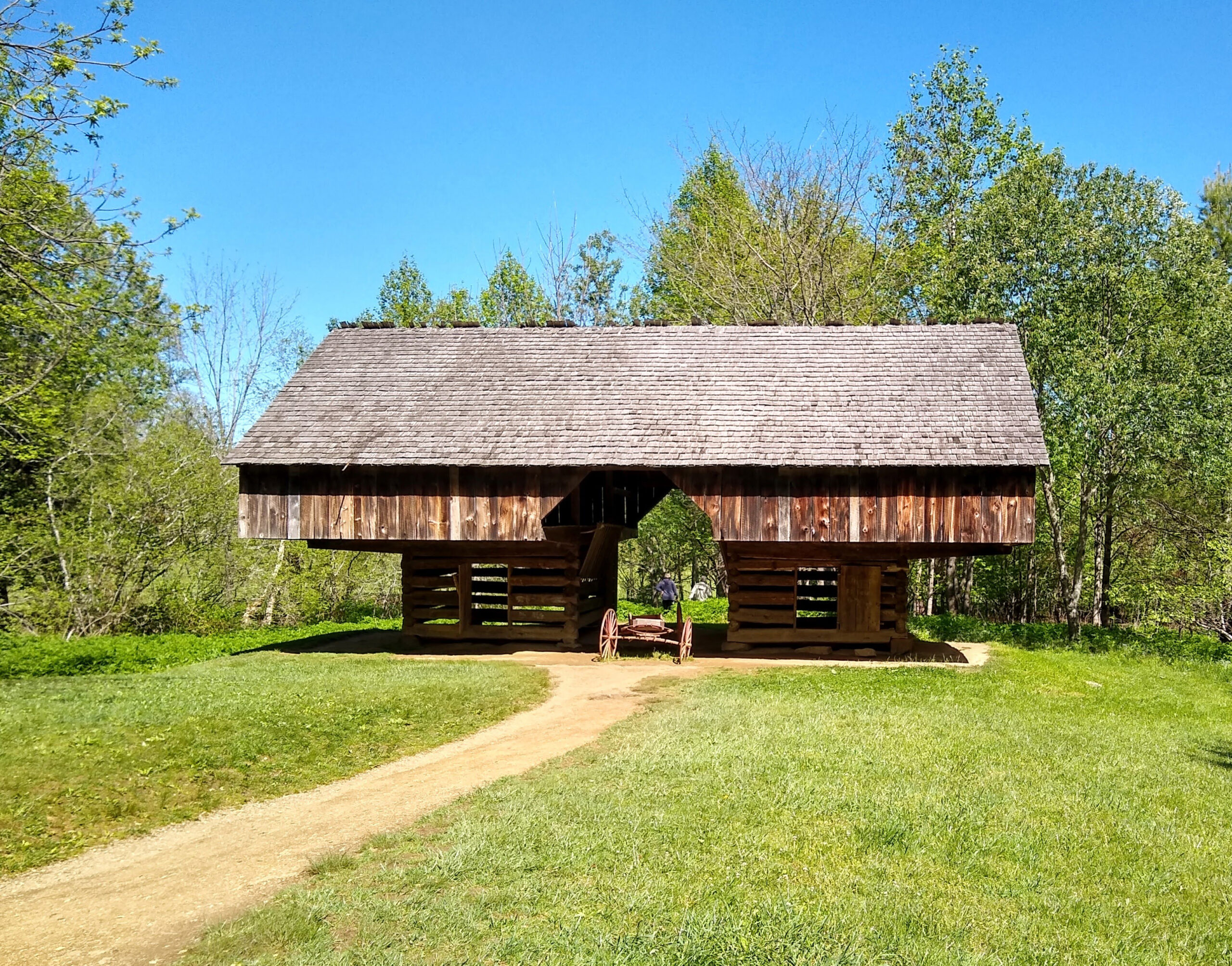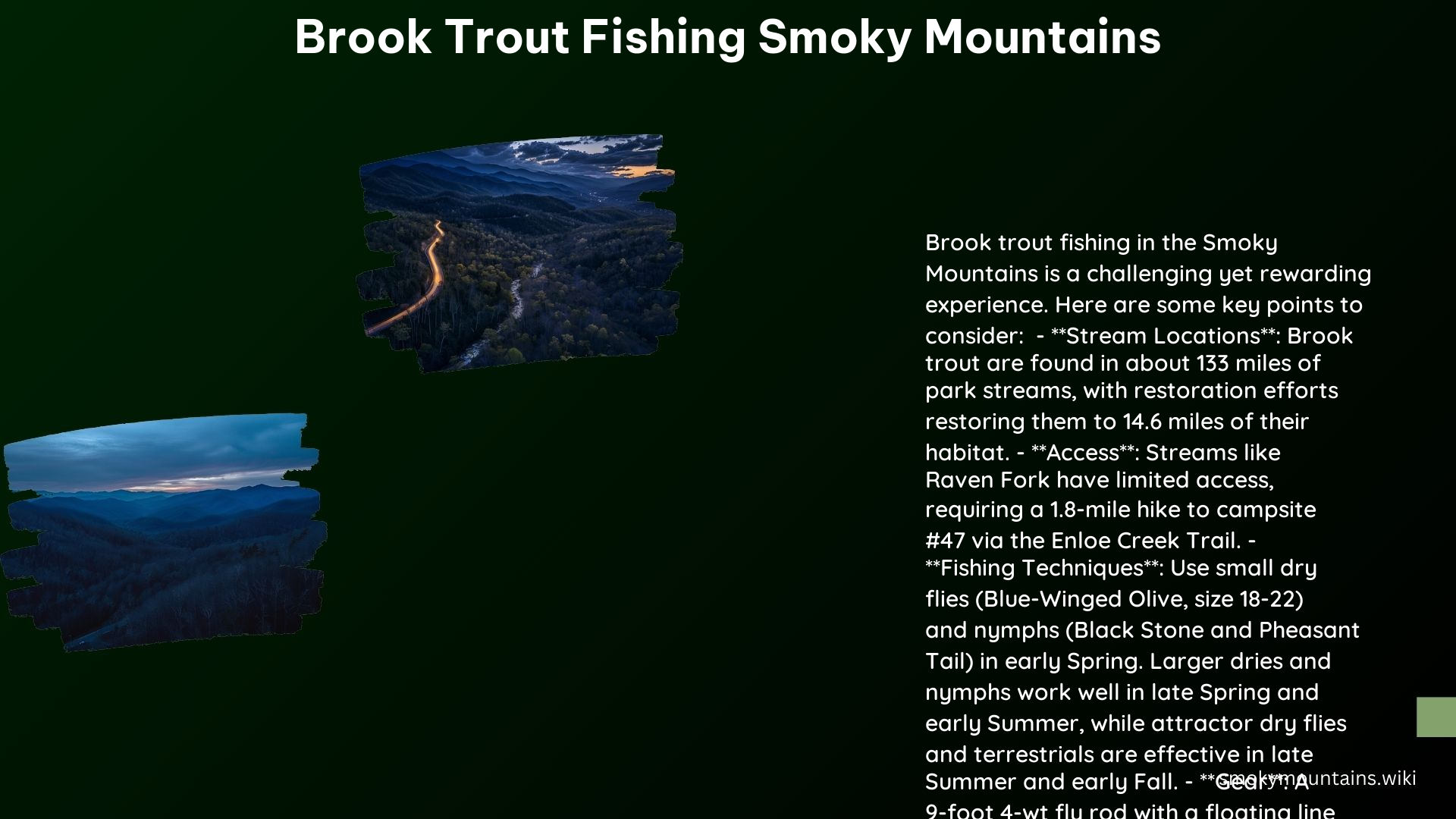The Great Smoky Mountains National Park is a renowned destination for anglers seeking to experience the thrill of catching native brook trout. These elusive and beautiful fish are found in the park’s pristine, cold-water streams, offering a unique and challenging fishing experience. In this comprehensive guide, we’ll explore the best streams to target, the regulations and conservation efforts, and the most effective fly patterns to help you plan your ultimate brook trout fishing adventure in the Smoky Mountains.
Best Streams for Brook Trout in the Smoky Mountains

-
Raven Fork: Renowned for its rugged wilderness and limited access, Raven Fork is considered one of the top destinations for brook trout fishing in the park. To reach the prime fishing spots, anglers must hike 1.8 miles to campsite #47 via the Enloe Creek Trail, adding to the sense of adventure and remoteness.
-
Fish Camp Prong: This backcountry stream is another excellent choice for brook trout enthusiasts. The beautiful, clear water and good population of native brook trout make it a popular destination. The hike to the start of the brook trout water is approximately 7 miles from the trailhead.
-
Other Notable Streams: While Raven Fork and Fish Camp Prong are the most renowned, the Great Smoky Mountains National Park is home to numerous other streams that harbor healthy populations of brook trout, including Abrams Creek, Hazel Creek, and Cosby Creek.
Regulations and Conservation Efforts

Brook trout are a native species in the Great Smoky Mountains National Park, and their habitat is limited to approximately 133 miles of the park’s streams. Restoration efforts have helped reestablish brook trout in 14.6 miles of their original habitat. While there are no specific size limits for brook trout in the park, catch-and-release fishing is strongly encouraged to help preserve the native population.
Effective Fly Patterns for Brook Trout in the Smoky Mountains
The best fly patterns for catching brook trout in the Smoky Mountains vary throughout the season, with different patterns working well during different times of the year:
| Season | Effective Fly Patterns |
|---|---|
| Early Spring | Small dry flies (Blue-Winged Olive, size 18 to 22) and nymphs (Black Stone and Pheasant Tail) |
| Late Spring and Early Summer | Large dries (Elk-Hair Caddis and Thunderhead, sizes 12 to 16) and nymphs (Golden Stone, Black Stone, and Hare’s Ear, sizes 10 to 14) |
| Late Summer and Early Fall | Attractor dry flies (Royal Wulff, Yellow Hammer, and Orange Palmer, sizes 10 to 14) and terrestrials (Bullet-Head Grasshopper, Chartreuse Inchworm, and Fur Ant, sizes 12 to 14) |
Gear Recommendations
For fishing the Raven Fork and other Smoky Mountain streams, a 9-foot 4-weight fly rod paired with a floating line and a tapered 9-foot leader with tippet size 3X to 6X is a suitable setup. This gear will allow you to effectively present dry flies and small nymphs to the elusive brook trout.
Fishing Permits and Conservation
Fishing is permitted year-round in all streams within the Great Smoky Mountains National Park. However, as these native brook trout are a precious resource, it’s essential to practice catch-and-release fishing and leave no trace behind to help preserve the population for future generations of anglers.
By following these guidelines and exploring the best streams for brook trout in the Smoky Mountains, you’ll be well on your way to an unforgettable fishing adventure in this stunning and ecologically diverse national park.
